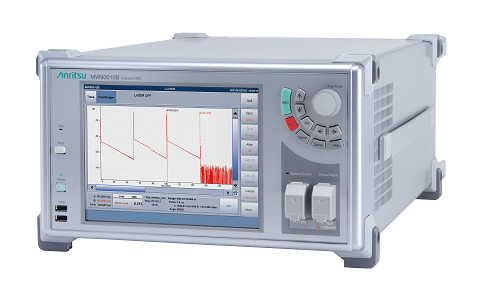
The OTDR MW90010B from Anritsu can accurately locate faults in submarine cables from distances up to 20,000 km.
Anritsu Corporation has unveiled the Coherent OTDR MW90010B, a powerful tool for locating faults in submarine cables. This device offers an evaluation range of up to 20,000 km, with a selectable wavelength that covers the full C-band. The MW90010B also offers improved portability, the module weighs less than 10kg i.e. a 40% weight reduction while maintaining the same product size as its predecessor. It offers easy portability at landing stations, submarine cable laying vessels and other maintenance sites. With its extended measurement range, wavelength versatility, and reduced weight for portability, the MW90010B is set to meet the evolving needs of the industry.
As the demand for high-speed and low-latency data synchronization continues to grow with the widespread adoption of 5G mobile and cloud services, major IT vendors are investing in new installation projects and establishing landing stations and cables to connect data centres at high speeds. Consequently, submarine cable networks have become more complex, necessitating enhanced quality assurance for their installation and maintenance.
To address this market demand and support the ongoing evolution of submarine cable communications, Anritsu has developed the Coherent OTDR MW90010B. This advanced device utilizes a coherent (optical heterodyne) detection method and comes equipped with a built-in tunable wavelength light source. Notably, it allows for the measurement of all cable lines from each landing station, ensuring the high quality and reliability of submarine cables.
The company claims that the MW90010B boasts a range of key features that set it apart in the industry. It can accurately locate faults in submarine cables up to an impressive 20,000 km distance and supports faulty detection up to 12,000 km with repeaters installed at intervals of 80 km or wider. The addition of the MW90010B-003 option extends the detection distance even further to 20,000 km. Moreover, its wider wavelength range of 1527.60 to 1567.13 nm, using ITU-T grid 50GHz step, covers the full C-Band measurement spectrum, providing comprehensive testing capabilities.






